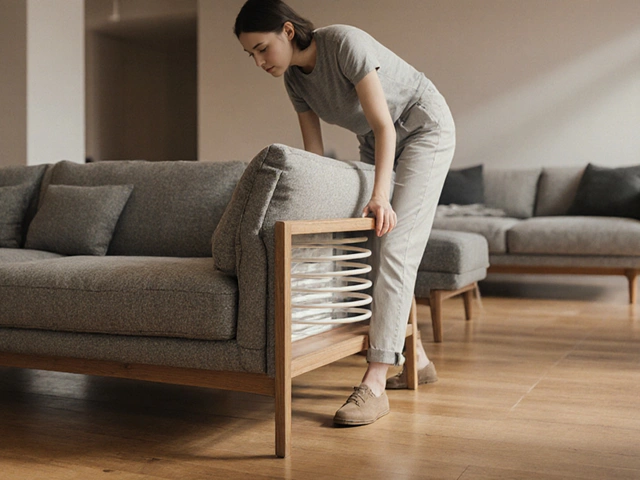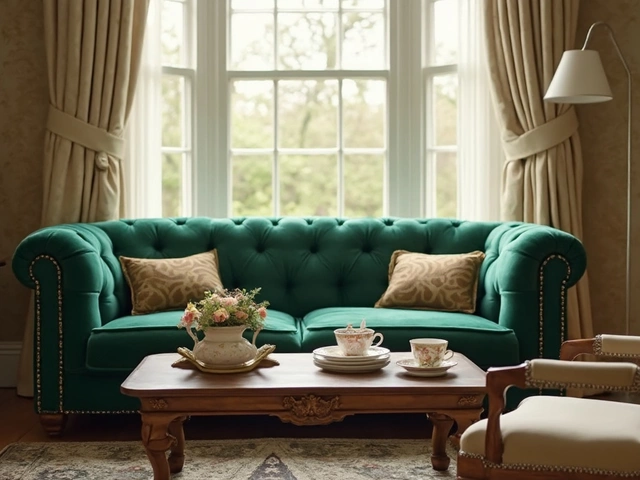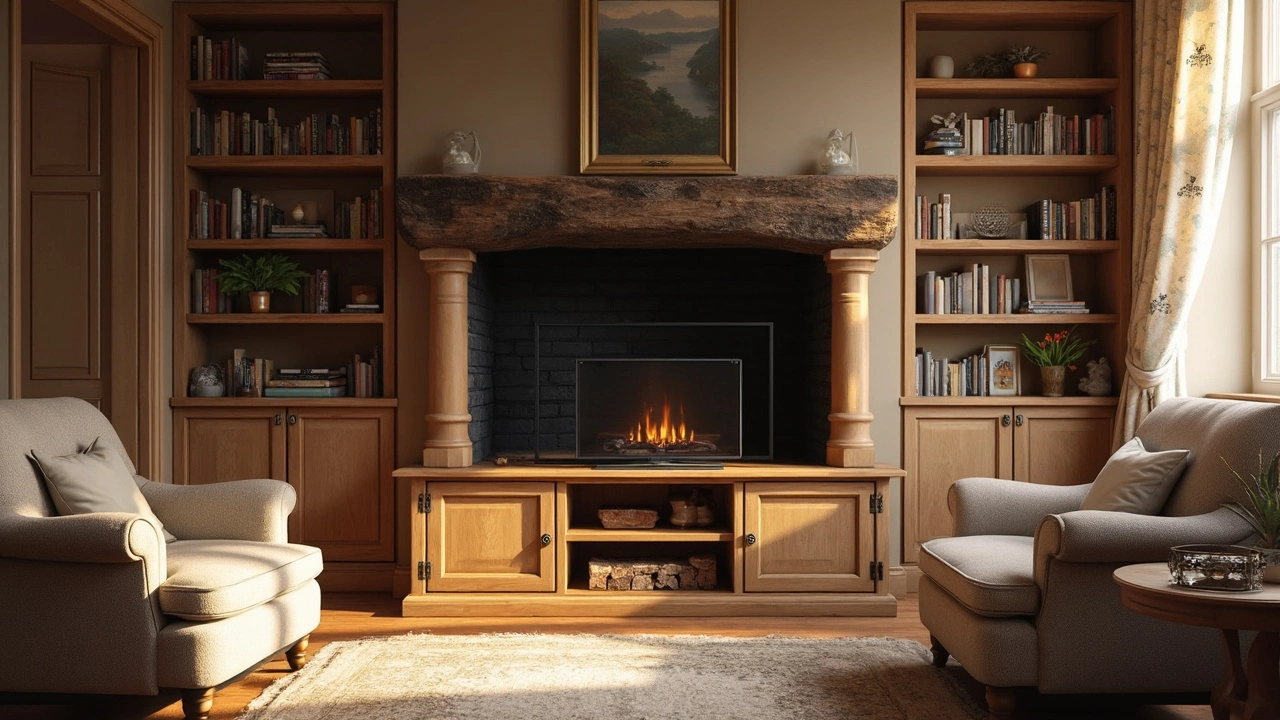 7
Feb,2025
7
Feb,2025
Picking the right TV stand isn't just about fitting your television. It's about creating a balanced, safe, and stylish centerpiece for your room. Ever thought about how much longer your TV stand should be than your TV? Well, you're not alone. This is something that can make or break the look of your space.
A general rule of thumb is to have the stand be at least a few inches longer on either side of the TV. This extra space isn't just for looks; it helps with stability, ensuring your TV doesn't wobble or, worse, topple over. Remember, the wider the base, the better the support!
But it's not just about safety. A wider stand gives you more room to play with decor. Think about it—space for speakers, a gaming console, or even a nice plant can make a huge difference. Plus, it stops your setup from looking like a TV just plopped on a shelf. So, what’s your TV stand setup like?
- Why TV Stand Size Matters
- Finding the Right Overhang
- Balancing Aesthetics and Functionality
- Considerations for Different Room Sizes
- Safety and Stability Tips
Why TV Stand Size Matters
First off, let's talk about stability. A TV stand that's wider than your TV gives the whole setup more stability. When the stand extends a few inches beyond the screen on each side, it provides a solid base that reduces the risk of your TV getting knocked over. This is especially important if you've got kids or pets romping around.
There's also the aesthetic factor. A broader stand can make your TV look more intentional. Imagine your TV as the centerpiece of your living room. By having a stand that's appropriately bigger, it frames your TV nicely without making it look like an afterthought.
And then we've got practicality. If your TV stand size is on point, you gain valuable space for other essentials. A roomy stand can house devices like gaming consoles, streaming gadgets, or even some tasteful decorations. You don't want everything crammed up, right?
In terms of room dimensions, getting the size right helps in optimizing your room's flow. A stand that's too bulky can overpower a small area, making it feel cramped, while a tiny stand might look lost in a larger room. You want to strike a balance where everything feels just right.
| TV Size (inches) | Recommended Stand Length (inches) |
|---|---|
| 32 | 40 - 48 |
| 50 | 58 - 66 |
| 65 | 73 - 81 |
If you've ever set up a TV on a too-small stand, you know it can feel a bit off-balance, not just literally but visually as well. So, do yourself a favor and give some thought to the size of your TV stand. You'll be glad you did.
Finding the Right Overhang
So, you've got your shiny new TV and you're stoked to get everything set up. But wait, how do you make sure your TV fits well on the stand? The answer lies in finding the right overhang. This is all about making sure your TV stand is just the right size to not only hold your TV but also to look good doing it.
Ideally, your TV stand should extend about 2 to 3 inches on each side of the TV. This provides that extra bit of balance, which is crucial for preventing accidental knocks or tips. If your TV is 50 inches wide, consider a stand that's at least 56 inches wide. This measurement isn't just a wild guess, it's based on expert advice.
"A well-designed TV stand not only complements your home decor but ensures the safety of your electronics," says Alex Collins, a prominent interior designer. "Extra overhang provides more stability and gives room for accessories."
Aesthetic and Practical Benefits
Besides keeping your TV from tipping, the overhang offers a clever spot to tuck away all those pesky wires or to place a pair of stylish speakers. Think about this: a couple of additional inches can be the difference between a cluttered look and a neat, organized setup.
Using a slightly broader TV stand also tends to balance the room. Without the right overhang, a large TV often looks like it's overpowering the stand, or worse, about to fall off!
Steps to Evaluate Overhang Needs
- Measure your TV's width accurately.
- Determine if the stand offers at least 2 to 3 inches of space on either side.
- Check for accessibility: can you easily reach around to hook up wires or consoles?
- Consider the room's layout—ensure the extended part of the stand doesn't block pathways or create awkward protrusions in the room.
Follow these simple pointers, and you're likely to achieve a more harmonious and secure setup that not only showcases your gear but elevates your space's overall vibe.
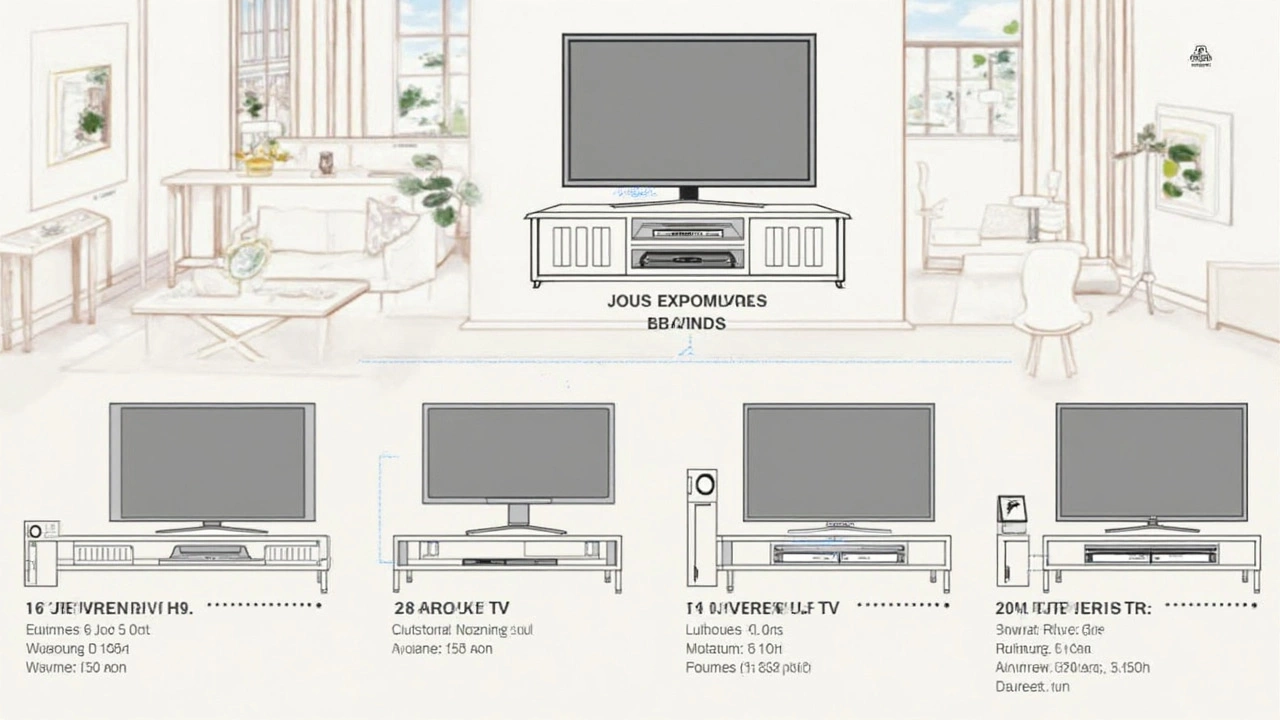
Balancing Aesthetics and Functionality
When it comes to choosing the right TV stand size, you want to strike the perfect balance between how it looks and how it works. The art of finding harmony can really transform your space, making it both practical and pleasing to the eye. Let's explore how to achieve this balance.
Matching Styles and Themes
Your TV stand should complement the room's decor without overpowering it. Whether you're into a modern minimalist look or a cozy rustic vibe, the stand should fit seamlessly. A sleek, black stand might be perfect for an urban apartment, while a wooden piece can warm up a more traditional setting.
Considering Functionality
Beyond looks, your TV stand needs to be functional. Make sure it has enough storage for your gadgets, DVDs, or game consoles. Look for a stand with hidden compartments if you want to keep things tidy. If you're someone who loves to change room setups, consider a stand on wheels. TV stand placement also affects the room flow, so double-check it leaves enough space for movement.
Using Space Wisely
A TV stand dimensions should fit your room's size. For smaller spaces, consider a wall-mounted stand or a corner unit to free up floor space. Larger rooms can handle more elaborate pieces, giving you a chance to show off your style with a wider stand.
Adding Personal Touches
Once you've got the right stand, jazz it up with your favorite decor. Add family photos, books, or art pieces to enhance the look. Just remember not to overcrowd—it should still serve its function. You want everything within easy reach, not cluttering the area.
If you're wondering whether a certain style or feature is worth it, check out these quick TV stand buying stats:
| Feature | Percentage of Buyers |
|---|---|
| Storage Needs | 65% |
| Matching Decor | 55% |
| Mobility | 30% |
Statistics show a growing interest in stands that blend both style and utility. So, whether you're revamping or starting from scratch, keep these tips in mind. After all, it’s not just about holding a TV—it’s about crafting a perfect setup that fits your lifestyle.
Considerations for Different Room Sizes
Choosing the right TV stand size largely depends on your room's dimensions. In a tiny apartment or a snug bedroom, you'll face different challenges than someone decking out a spacious living area. Let's break down how room size plays a pivotal role.
Small Rooms
In smaller spaces, every inch counts. You might think a petite stand is the way to go, but a compact stand can crowd your area. Look for multifunctional stands that offer storage—maybe something with drawers or shelves. This way, you're saving space and staying organized.
Remember to measure your wall space and keep at least a foot clearance on each side if possible. It prevents your room from feeling cramped and leaves room for other essentials or decor.
Medium-Sized Rooms
For medium spaces, you have more flexibility. Aim for a stand that's slightly longer than your TV to keep the proportions balanced. Having some extra length on either side adds visual balance and grants room for accessories like sound bars or decorative items.
Make sure it doesn't overpower the furniture around it. Matching the stand's finish with existing furniture can tie everything together and make your setup look intentional.
Large Rooms
Lucky enough to have a large room? Go big but not chaotic. A wide TV stand not only ensures stability but also stands as a statement piece in your living area. Don't hesitate to experiment with industrial or rustic designs that demand attention.
| Room Size | Ideal Stand Length vs TV |
|---|---|
| Small | 10-15% wider than the TV |
| Medium | 15-20% wider than the TV |
| Large | 20% or more wider than the TV |
Having a consistent style can enhance aesthetics and contribute to a cozy yet refined atmosphere. Remember, it's not just about the TV—it's about creating a comfortable environment that fits your lifestyle.
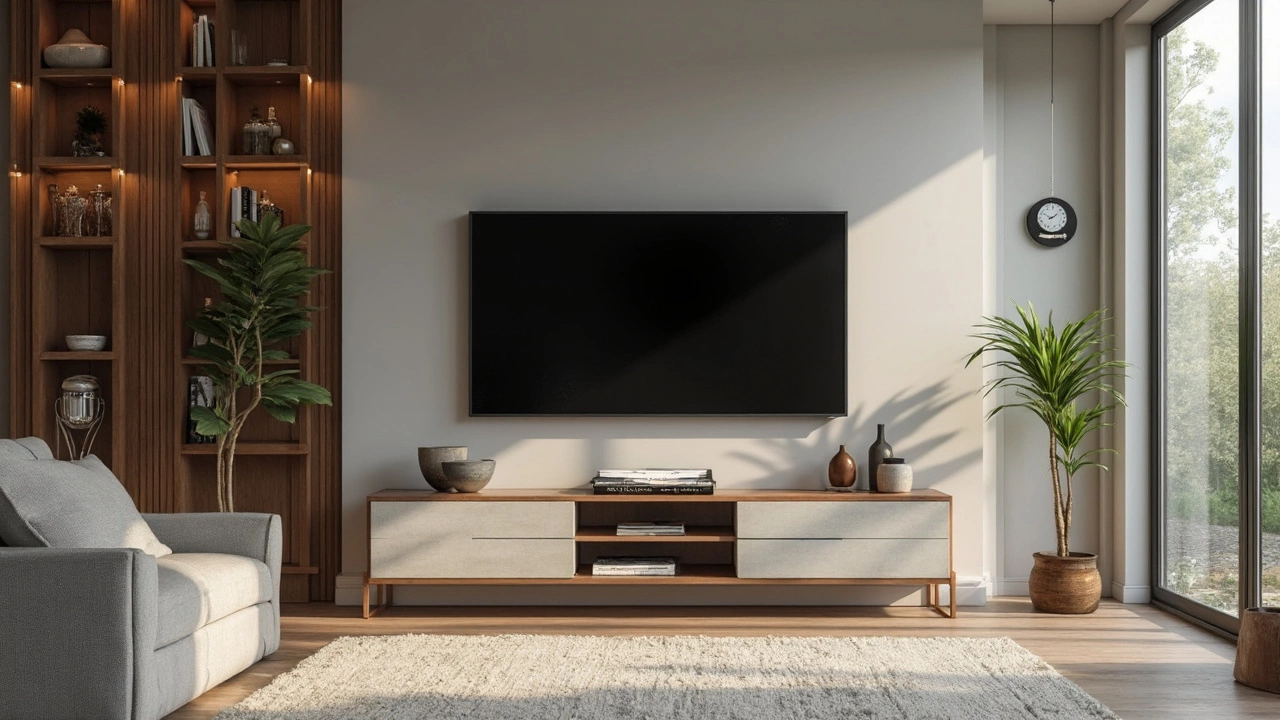
Safety and Stability Tips
When it comes to setting up your TV, safety and stability should be top of mind. You don’t want your entertainment center to become a hazard, right? Let's dig into some practical tips to keep your TV stand secure and your TV safe.
Weight Distribution is Key
First things first, consider the weight. Make sure your stand is designed to support the weight of your TV and any other gadgets or decorations. Check the specs before you buy; a stand that looks sturdy but can't hold the weight might lead to a disaster.
Anchor the TV
Anchoring your TV to the wall or the TV stand itself is a smart move. Many accidents happen due to tipping, especially with little ones or pets around. Use brackets or straps specifically made for your TV size to anchor it securely.
Level the Stand
Ensure your TV stand is on a level surface. Use a spirit level to check if you’re not sure. Even a slight tilt can cause problems over time, affecting not only viewing pleasure but also the integrity of the stand.
Consider Added Stability Features
Look for stands with adjustable feet or built-in cable management to improve stability. These small features can prevent tipping and make your setup look neater. Cables dangling around are not just messy, they’re tripping hazards!
Sufficient Clearance
Don't forget about clearance. Having your stand longer than your TV isn't just for looks — it helps prevent accidental knocks that can send your TV flying off. Make sure there’s enough length on each side for safe placement.
| TV Size | Recommended Stand Overhang |
|---|---|
| 32 inch | At least 2 inches on each side |
| 50 inch | At least 3 inches on each side |
| 65 inch | At least 4 inches on each side |
By giving your setup the right care and attention, you ensure it’s not just stylish but also safe. Who knew a little extra stand overhang could save you from a lot of trouble?


